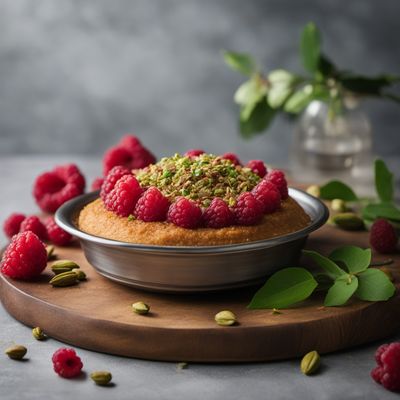
Ingredient
Indian corn grain
Golden Harvest: Unveiling the Richness of Indian Corn Grain
Indian corn grain is characterized by its large, plump kernels that come in a variety of colors, including yellow, white, blue, and red. It has a starchy texture and a subtly sweet flavor. Its appearance adds visual appeal to dishes, making it a popular choice for both culinary and decorative purposes. The versatility of Indian corn grain allows it to be used in a wide range of dishes, from soups and stews to salads and baked goods.
Origins and history
Indian corn grain has a rich history that dates back thousands of years. It originated in Mesoamerica and was cultivated by indigenous peoples such as the Mayans and Aztecs. It played a significant role in their culture, economy, and religious ceremonies. After the European colonization of the Americas, corn spread to other parts of the world, becoming a vital crop in many countries. Today, it is one of the most widely grown and consumed grains globally.
Nutritional information
Indian corn grain is a nutrient-dense ingredient that provides essential vitamins, minerals, and dietary fiber. It is a good source of carbohydrates and contains small amounts of protein and fat. Additionally, it is rich in antioxidants, such as lutein and zeaxanthin, which are beneficial for eye health.
How to select
When selecting Indian corn grain, look for ears that have plump, well-filled kernels. The husks should be bright green and tightly wrapped around the ear. Avoid ears with dry or discolored husks, as they may indicate poor quality or age. Additionally, check for any signs of mold or insect damage. Freshly harvested corn will have a sweet aroma when the husks are peeled back.
Storage recommendations
To maintain the freshness of Indian corn grain, store unhusked ears in a cool, dry place. Avoid exposing them to direct sunlight or high humidity, as this can cause the kernels to dry out or become moldy. Once husked, store the corn in the refrigerator, preferably in a perforated plastic bag, for up to five days. For longer-term storage, blanch the corn and freeze it in airtight containers or freezer bags.
How to produce
Indian corn grain can be grown by amateur gardeners in a variety of climates. It requires a sunny location with well-drained soil. Sow the seeds directly into the ground or in containers, ensuring they are spaced adequately. Regular watering and fertilization will promote healthy growth. Harvest the corn when the kernels are plump and the husks have turned brown.
Preparation tips
Indian corn grain can be prepared in various ways, depending on the desired dish. It can be boiled, steamed, grilled, or roasted. When boiling or steaming, be careful not to overcook the kernels, as they can become mushy. Grilling or roasting the corn enhances its natural sweetness and imparts a smoky flavor. It can also be used to make cornmeal, corn flour, or cornstarch for baking and thickening sauces. Additionally, Indian corn grain can be ground into masa to make tortillas, tamales, and other traditional dishes.
Culinary uses
Indian corn grain is widely used in a variety of culinary applications. It is a key ingredient in dishes such as cornbread, corn chowder, corn pudding, and corn salsa. It can also be added to salads, stir-fries, and grain bowls for added texture and flavor. In many cultures, corn is a staple food and is used to make traditional dishes like tortillas, polenta, and arepas. Additionally, corn is used in the production of various food products, including corn oil, corn syrup, and cornstarch.
Availability
Indian corn grain is commonly available and cultivated in countries such as the United States, Mexico, Brazil, China, and India.
More ingredients from this category
Recipes using Indian corn grain » Browse all

Hakka-style Stuffed Bitter Melon
Savory Delight: Hakka Stuffed Bitter Melon

Chinese Indonesian Style Goya Chanpuru
Savory Stir-Fried Bitter Melon with Tofu and Shrimp

North Indian Queen of Puddings
Royal Delight: North Indian Queen of Puddings

Stuffed Bitter Melon (Bharwan Karela) with a Nicaraguan Twist
Nicaraguan Stuffed Bitter Melon: A Burst of Flavors

Okinawan Møsbrømlefse
Savory Okinawan Pancakes with a Norwegian Twist

Okinawan-style Miso Soup with Pork Tripe
Umami Delight: Okinawan Miso Soup with Tender Pork Tripe

Shukto - A Bengali Delight
Bengali Shukto: A Symphony of Flavors

Pinakbet with a Twist
Savory Delight: A Modern Twist on Pinakbet

Spicy Coconut-Infused Kugua Stir-Fry
Caribbean Heat: Spicy Coconut Kugua Stir-Fry

Dinengdeng with a Twist
Savor the Flavors of the Philippines: A Modern Twist on Dinengdeng

Spicy Stir-Fried Bitter Melon
Fiery Bites: Sizzling Spicy Stir-Fried Bitter Melon

Okinawan Gueffus
Purple Sweet Potato Gueffus: A Vibrant Twist on Okinawan Cuisine


